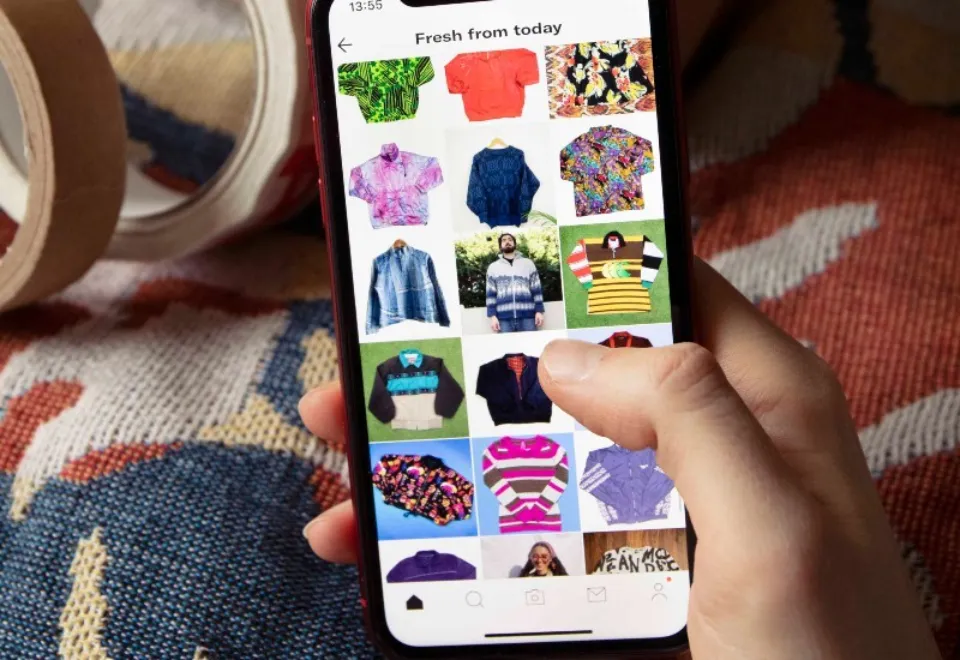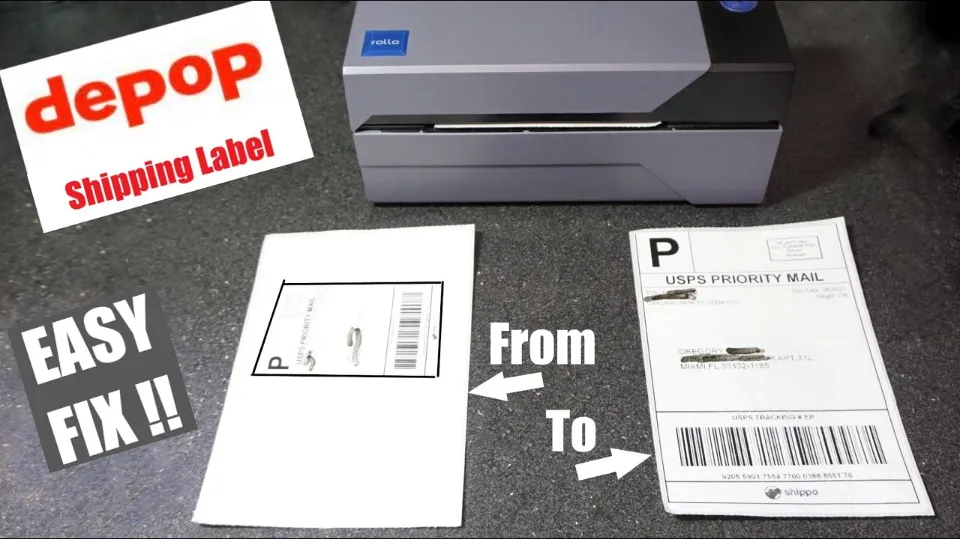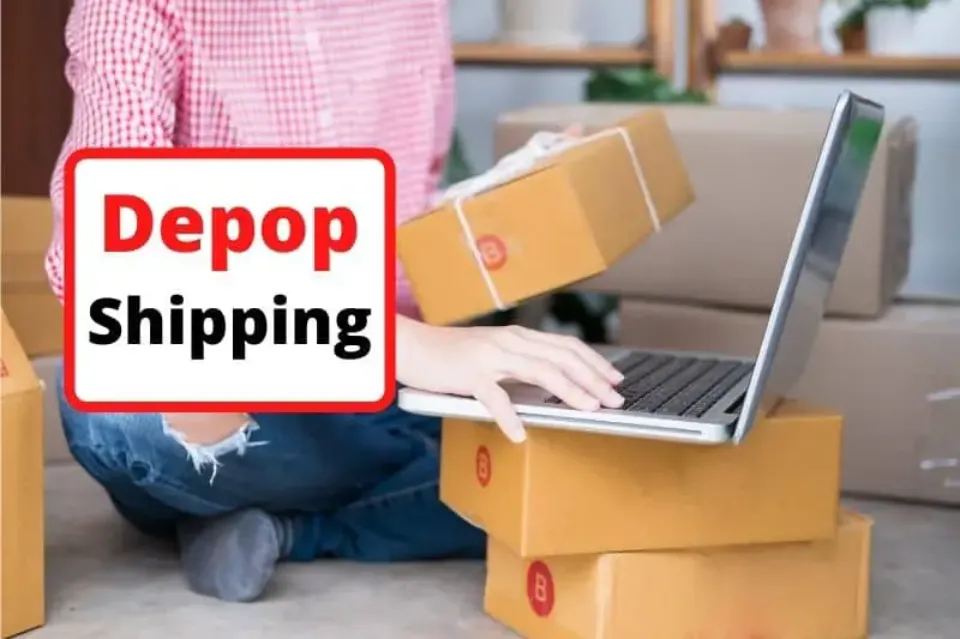When you ship with Depop, you can download a prepaid shipping label that the company has created, and tracking will begin as soon as the package is on its way.
What is Depop?

Founded on the tenets of social commerce, Depop is a P2P eCommerce platform. They don’t actually sell anything on their own; rather, they act as a middleman between Depop sellers and customers, enabling people to set the retail price of their goods and locate potential customers, all while providing a reliable and secure platform that lowers the risk of being duped or overcharged for particular goods.
In addition to the UK, Depop has also managed to build a sizable fan base in nations like Australia, New Zealand, and Italy, as well as a devoted following in the US. Depop is still king of online marketplaces even though its rivals, like Vinted, are not too far behind in terms of usability and the freedom to list items, simply because it was the first platform to put a major emphasis on used clothing and avoid getting too involved in the interactions between buyers and sellers.
How Does Depop Work?
Depop is approachable and understandable from the outset because scrolling through it isn’t much different from doing so on one of the popular social media sites, like Facebook or Instagram. You are free to begin selling and buying once you have established an account, though it may be wise to familiarize yourself with the site first, by way of example. check out how much certain items are selling for in your location, getting familiar with the shipping policy, and the get a feel for the Use the Depop app to ensure that you make your first sales without making any unnecessary mistakes.
Depop generates revenue by levying a flat fee on each transaction made through its app, much like any other marketplace platform that is free to use. The Depop fee is currently 10% off of any purchase, so as a seller, it might be a good idea to factor that rate into your price before listing the item (charge 10% more than you would like to get for the item of clothing so that you’re not paying the fee out of your own profits).
Since buyers and sellers do not actually interact, it is crucial to establish a reliable online presence with a wealth of information that verifies your identity and legitimacy. In order to avoid the hassle of proving your identity in any other way, linking Depop profiles to social media accounts is a common practice.
Why Should You Consider Becoming a Depop Seller?
For the most part, we have way more clothes than we know what to do with. The ease of purchasing clothing and accessories is higher than ever in today’s society due to fast fashion retailers and rapidly evolving fashion trends. Although it may be very convenient for us as consumers, relying on stores like H&M or Zara for all of your clothing needs without giving much thought to what happens to the discarded items in your closet can have a negative financial and environmental impact.
To get an estimate of how damaging this “buy, wear, never-touch-again” approach is to planet Earth, try to comprehend this: more international flights and maritime shipping combined than the fashion industry produces in carbon emissions annually! Not that you should never shop at Zara again, but adopting a more environmentally conscious attitude when it comes to clothing could significantly help cut down on global emissions. After all, these retailers keep increasing their manufacturing efforts to meet demand, so if there is less of a demand for brand-new, inexpensive clothing, the pollution that comes from producing so much clothing year after year will inevitably increase.
Apps like Depop are fantastic for this very reason. By purchasing used clothing, they enable people to give their clothes a new lease on life and reduce their carbon footprints. Nobody should have to give up style for sustainability, and websites like Depop let you have the best of both worlds: get fashionable, high-quality clothing for low prices, earn some extra cash by decluttering your wardrobe, and reduce your (and your customers’) support for a polluting industry!.

How to Sell on Depop: a Beginner’s Guide
There are a few steps you must complete before you can begin selling, even though creating your own Depop shop isn’t particularly difficult. Additionally, it’s crucial to pay close attention to detail because it could have a direct impact on whether or not users want to do business with you.
Create An Account
It’s not too complicated with this one. Like any other social media or eCommerce website, you can sign up for Depop. A phone number, email address, and some basic personal data, like your first and last names and the nation you’re currently in, are all you really need to set up your first Depop profile.
Become a Seller
Linking your PayPal account to your current Depop account is a requirement if you want to sell on Depop. You might find it a little inconvenient that you must use that specific payment method in order to receive money from your sales, but in reality, it’s the best and one of the only ways to guarantee that the transaction is completed quickly and securely, with tasks like deducting the Depop fees being completed automatically rather than taking up more of your (and your buyer’s) valuable time.
The money will be deposited into your PayPal account as soon as the sale is completed, and you can quickly transfer it from there into your bank account. It’s advised that you keep saving up your hard-earned money until you can withdraw a sizable sum in order to avoid having to pay a PayPal transaction fee each time you withdraw. However, if you’re short on cash, who are we to tell you what to do with it?
Take Photos of Your Items
It is impossible to overstate the significance of this action. The Depop selling process’ photo step is probably the most crucial one, so take your time with it. If the item’s pictures don’t accurately depict it, it doesn’t really matter what you write in the item description. You are aware of the superior quality of the hoodie you are selling, but your customers are not. The photos are the only way for them to decide whether or not the hoodie is actually worth the asking price, so if they aren’t good enough, you’ll have trouble selling it.
It’s important to have good lighting, so try to take the photos in the middle of the day when your clothes will be well-lit by the sun. Avoid waiting until after noon. Even though the golden hour is perfect for taking selfies, it’s not the best time to photograph something you’re about to sell.
Avoid limiting yourself to just one image! You should take pictures of the item of clothing from the back and the sides in addition to the standard front view, especially if you’re charging a premium for it. Finally, it’s always a smart move to include a photo of how it appears on a real person, so don’t be afraid to occasionally pose for the camera!
Create An Eye-Catching Listing
Spend some time considering what to write in the description and what hashtags you’ll use to get your clothes to appear in user searches after you’ve taken the appealing photos that will draw customers to your profile and encourage them to look further.
Don’t ramble; be precise and brief. Save the vivid, wordy descriptions of the designs for the blogs that cover fashion. Get right to the point when describing your Depop stores. Additionally, make use of pertinent hashtags! They are adored by Depop algorithms, and the digital overlords will certainly reward pertinent tags and descriptions while penalizing bloated language or brand spamming. To increase your chances of making a sale, try to list several items at once. There is no guarantee that you’ll find a buyer right away, and some clothes frequently sit on Depop for months before being purchased.
Set a Price
There are a few things you should take into account when setting the price of your items. First of all, the original price. A year-old hoodie won’t sell for the same price you paid for it, but if you took good care of it, you shouldn’t have to set the price too low either.
This brings us to the second point: the item’s condition. Although it’s easy to get banned from Depop for selling damaged goods, this doesn’t mean you can’t sell items with minor flaws as long as you’re upfront about them and adjust the price accordingly.
Finally, include delivery costs in the price. Although adding a shipping fee to the price initially seems shady, it’s actually a smart business move. Due to the fact that buyers already pay for shipping as part of the item’s price, it will be simpler to calculate your profit and will enable you to offer free shipping on certain items.
Ship the Items
After finding a buyer, it’s time to get the right shipping service to deliver your clothes. A tracking number or express delivery should never be promised to a customer unless you are certain that it is included in the courier service’s scope of services.

Conclusion
Even though there are many online markets, Depop is probably one of the most user-friendly because it allows you to start selling items right away without completing any lengthy verification.
Nevertheless, no matter how simple it is to begin selling on Depop, selling on any platform for the first time may initially seem confusing. Before selling on any marketplace, there are numerous things you should be aware of. Many crucial details that you should be aware of before selling on Depop are covered in this article.
Stop wasting time right away! To begin selling your own goods on Depop, simply follow the instructions in this article.

